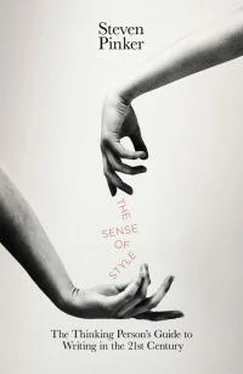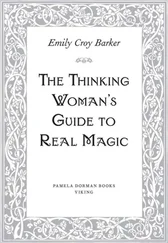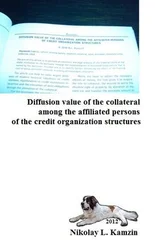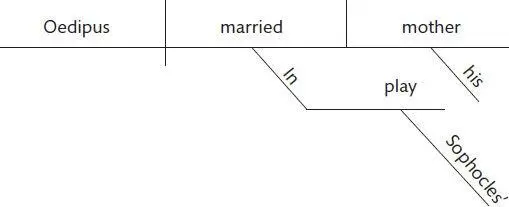
The Reed-Kellogg notation was innovative in its day, but I for one don’t miss it. It’s just one way to display syntax on a page, and not a particularly good one, with user-unfriendly features such as scrambled word order and arbitrary graphical conventions. But I agree with the main idea behind the nostalgia: literate people should know how to think about grammar.
People already know how to use grammar, of course; they’ve been doing it since they were two. But the unconscious mastery of language that is our birthright as humans is not enough to allow us to write good sentences. Our tacit sense of which words go together can break down when a sentence gets complicated, and our fingers can produce an error we would never accept if we had enough time and memory to take in the sentence at a glance. Learning how to bring the units of language into consciousness can allow a writer to reason his way to a grammatically consistent sentence when his intuitions fail him, and to diagnose the problem when he knows something is wrong with the sentence but can’t put his finger on what it is.
Knowing a bit of grammar also gives a writer an entrée into the world of letters. Just as cooks, musicians, and ballplayers have to master some lingo to be able to share their tips and learn from others, so writers can benefit by knowing the names of the materials they work with and how they do their jobs. Literary analysis, poetics, rhetoric, criticism, logic, linguistics, cognitive science, and practical advice on style (including the other chapters in this book) need to refer to things like predicates and subordinate clauses, and knowing what these terms mean will allow a writer to take advantage of the hard-won knowledge of others.
Best of all, grammar is a fascinating subject in its own right, at least when it is properly explained. To many people the very word conjures up memories of choking on chalk dust and cowering in fear of a thwack on the knuckles from a spinster schoolteacher. (Theodore Bernstein, the author of several style manuals, refers to the archetype as Miss Thistlebottom; the writer Kitty Burns Florey, who wrote a history of diagramming sentences, calls her Sister Bernadette.) But grammar should not be thought of as an ordeal of jargon and drudgery, as Skyler does in this Shoe cartoon:

It should be thought of instead as one of the extraordinary adaptations in the living world: our species’ solution to the problem of getting complicated thoughts from one head into another. Thinking of grammar as the original sharing app makes it much more interesting and much more useful. By understanding how the various features of grammar are designed to make sharing possible, we can put them to use in writing more clearly, correctly, and gracefully.
The three nouns in the chapter title refer to the three things that grammar brings together: the web of ideas in our head, the string of words that comes out of our mouth or fingers, and the tree of syntax that converts the first into the second.
Let’s begin with the web. As you wordlessly daydream, your thoughts drift from idea to idea: visual images, odd observations, snatches of melody, fun facts, old grudges, pleasant fantasies, memorable moments. Long before the invention of the World Wide Web, cognitive scientists modeled human memory as a network of nodes. Each node represents a concept, and each is linked to other nodes for words, images, and other concepts. 2Here is a fragment of this vast, mind-wide web, spotlighting your knowledge of the tragic story brought to life by Sophocles:
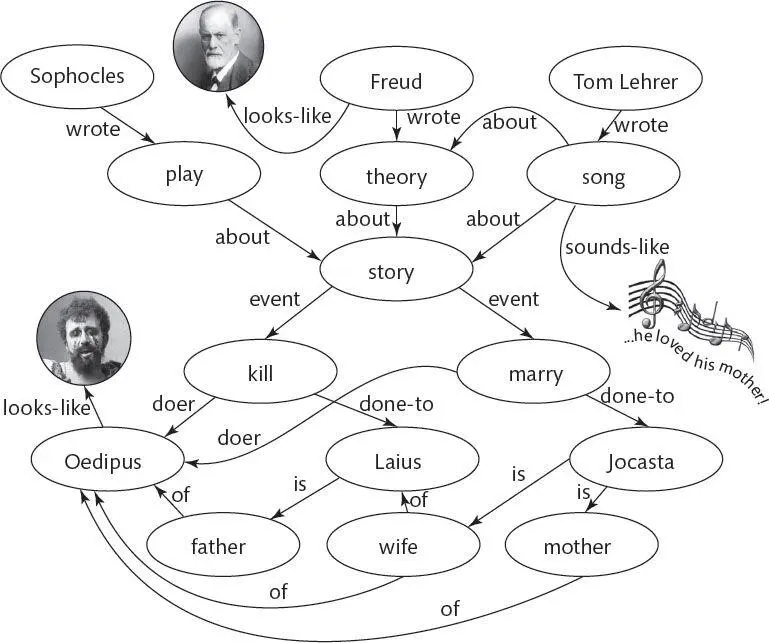
Though I had to place each node somewhere on the page, their positions don’t matter, and they don’t have any ordering. All that matters is how they’re connected. A train of thought might start with any of these concepts, triggered by the mention of a word, by a pulse of activation on an incoming link originating from some other concept far away in the network, or by whatever random neural firings cause an idea to pop into mind unbidden. From there your mind can surf in any direction along any link to any of the other concepts.
Now, what happens if you wanted to share some of those thoughts? One can imagine a race of advanced space aliens who could compress a portion of this network into a zipped file of bits and hum it to each other like two dial-up modems. But that’s not the way it’s done in Homo sapiens. We have learned to associate each thought with a little stretch of sound called a word, and can cause each other to think that thought by uttering the sound. But of course we need to do more than just blurt out individual words. If you were unfamiliar with the story of Oedipus Rex and I simply said, “Sophocles play story kill Laius wife Jocasta wed Oedipus father mother,” you wouldn’t guess what happened in a million years. In addition to reciting names for the concepts, we utter them in an order that signals the logical relationships among them (doer, done-to, is a, and so on): Oedipus killed Laius, who was his father. Oedipus married Jocasta, who was his mother . The code that translates a web of conceptual relations in our heads into an early-to-late order in our mouths, or into a left-to-right order on the page, is called syntax. 3The rules of syntax, together with the rules of word formation (the ones that turn kill into kills, killed, and killing ), make up the grammar of English. Different languages have different grammars, but they all convey conceptual relationships by modifying and arranging words. 4
It’s not easy to design a code that can extrude a tangled spaghetti of concepts into a linear string of words. If an event involves several characters involved in several relationships, there needs to be a way to keep track of who did what to whom. Killed Oedipus married Laius Jocasta, for example, doesn’t make it clear whether Oedipus killed Laius and married Jocasta, Jocasta killed Oedipus and married Laius, Oedipus killed Jocasta and married Laius, and so on. Syntax solves this problem by having adjacent strings of words stand for related sets of concepts, and by inserting one string inside another to stand for concepts that are parts of bigger concepts.
To understand how syntax works, it helps to visualize the ordering of strings-within-strings by drawing them at the ends of the branches of an upside-down tree.

I’ll explain the details soon, but for now it’s enough to notice that the words at the bottom (like mother ) are grouped into phrases (like his mother ), which are grouped into larger phrases (like married his mother ), which are grouped into a clause (a simple sentence like Oedipus married his mother ), which in turn may be inserted into a bigger clause (the whole sentence).
Syntax, then, is an app that uses a tree of phrases to translate a web of thoughts into a string of words. Upon hearing or reading the string of words, the perceiver can work backwards, fitting them into a tree and recovering the links between the associated concepts. In this case a hearer can deduce that Sophocles wrote a play in which Oedipus married his mother, rather than that Oedipus wrote a play in which Sophocles married his mother, or just that the speaker is saying something about a bunch of Greeks.
Читать дальше
